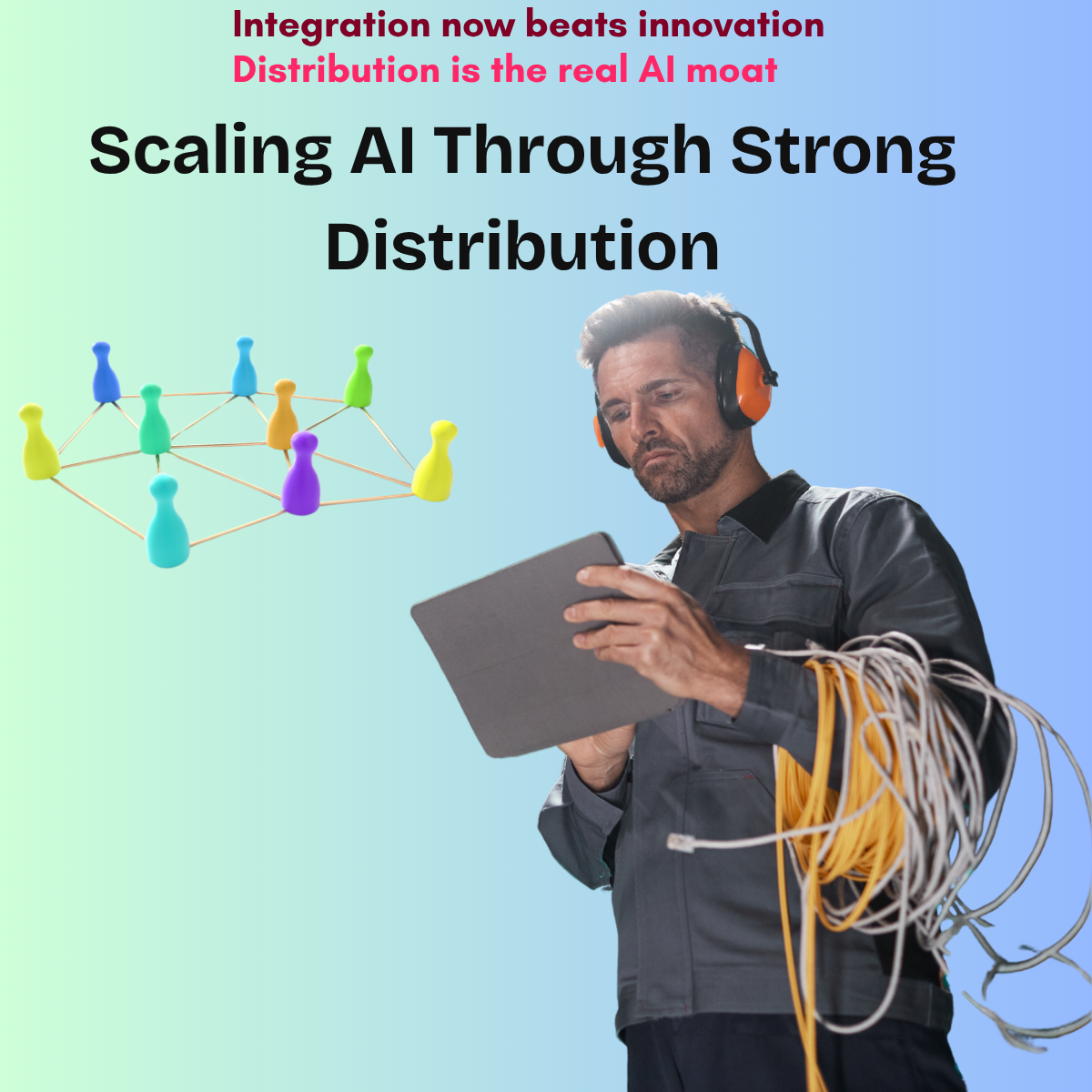Posted At: Aug 09, 2025 - 321 Views

🚀 The Importance of AI Distribution Muscle: Why Great Models Alone Aren’t Enough
Introduction
In the race to dominate the AI landscape, building a powerful model is no longer the finish line—it’s just the starting point. What increasingly separates AI leaders from the rest is something far more strategic: distribution muscle.
While headlines often focus on breakthroughs in models like GPT, Claude, Gemini, or Mistral, behind the scenes, the real battle is in how these tools are packaged, deployed, and adopted at scale.
💡 What Is “AI Distribution Muscle”?
AI distribution muscle refers to an organization’s ability to get its AI technology into the hands of real users at scale, across industries, devices, and use cases.
This includes:
- Platform integration (e.g., embedding AI into existing products like Microsoft Office)
- Developer ecosystems (e.g., APIs, SDKs, documentation)
- Enterprise sales teams with technical AI expertise
- Partner networks and OEM integrations
- Infrastructure readiness (e.g., cloud access, latency reduction, region coverage)
In short: It’s not just what you’ve built—it’s how many people are using it and how deeply it integrates into their workflow.
⚙️ Why Distribution Matters More Than Ever
1. Faster Adoption Beats Better Models
Even a slightly weaker model can win if it’s easier to use, deploy, and scale. OpenAI’s ChatGPT, for example, gained 100M users in record time—not because it was the most powerful model on launch day, but because it was the most accessible.
2. Moats Are Built on Integration
The more deeply AI tools are embedded into daily work (CRM, email, code editors, chat platforms), the harder it becomes to switch providers. This “stickiness” is a byproduct of smart distribution—not raw performance.
3. Infrastructure Drives UX
A low-latency, high-availability global network gives companies like Anthropic, Google, and OpenAI an edge. It's not just about how smart the model is—it's about how fast and reliably it answers.
4. Developer Love = Growth
APIs, plug-ins, and strong documentation fuel ecosystems that build new tools on top of your foundation—turning your AI into a platform, not just a product.
🏗️ Who’s Winning the Distribution Game?
✅ OpenAI + Microsoft
- ChatGPT integrated into Teams, Excel, Word (Copilot)
- Azure OpenAI API gives enterprises easy access
- Developer reach via OpenAI Playground + API
- Gemini models now baked into Gmail, Docs, Android
- Strong cloud + mobile device integration
- Distribution via Workspace + Search
✅ Anthropic
- Focused on Claude via Slack, Notion, and partnerships
- Embedding Claude into enterprise workflows via APIs
✅ Meta & Mistral
- Open-source approach fuels wide adoption
- Hugging Face and LLM platforms enable model reuse
🔄 Distribution Muscle Is a Flywheel
When you invest in distribution:
- More users try your product
- More feedback flows into model improvement
- Ecosystems build around your tool
- Data and brand loyalty reinforce long-term growth
It’s a feedback loop. And the companies that understand this—not just the science of AI, but the science of scaling AI—will define the future.
🛠️ How Startups Can Build AI Distribution Muscle
Even without billions in capital, startups can play smart:
- APIs first – Make your model or tool easy to integrate
- Solve specific problems – Don’t compete on generality; own a niche (e.g., legal, HR, logistics)
- Leverage open ecosystems – Use Hugging Face, Replit, or Discord to grow fast
- Partnerships over perfection – Find complementary tools and build bundles
In the next phase of the AI revolution, distribution muscle will matter just as much as innovation. The future winners won't just have the smartest models—they’ll be the ones who know how to get those models into millions of hands quickly and seamlessly. In AI, the best model in the lab is irrelevant if it never leaves the lab.
The best model in the world is the one being used.
